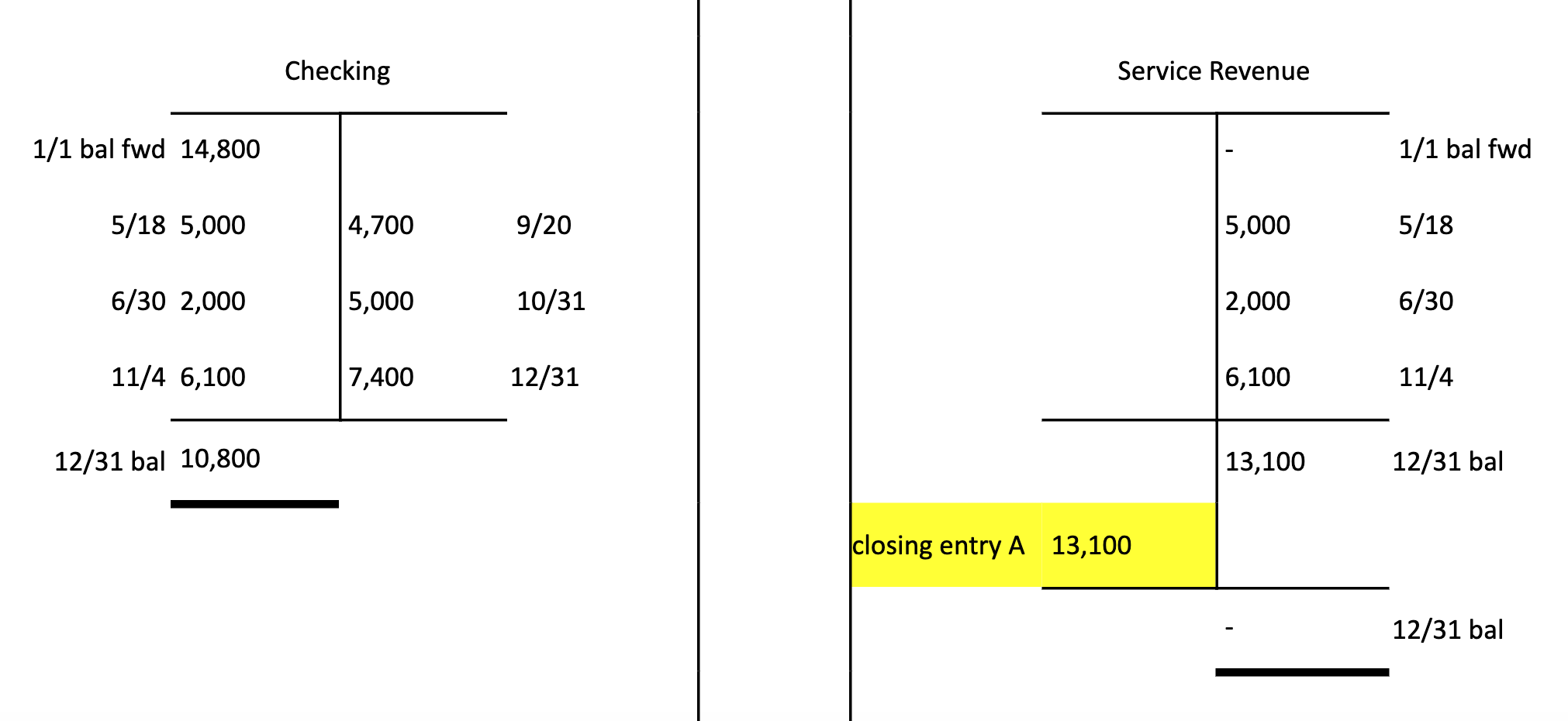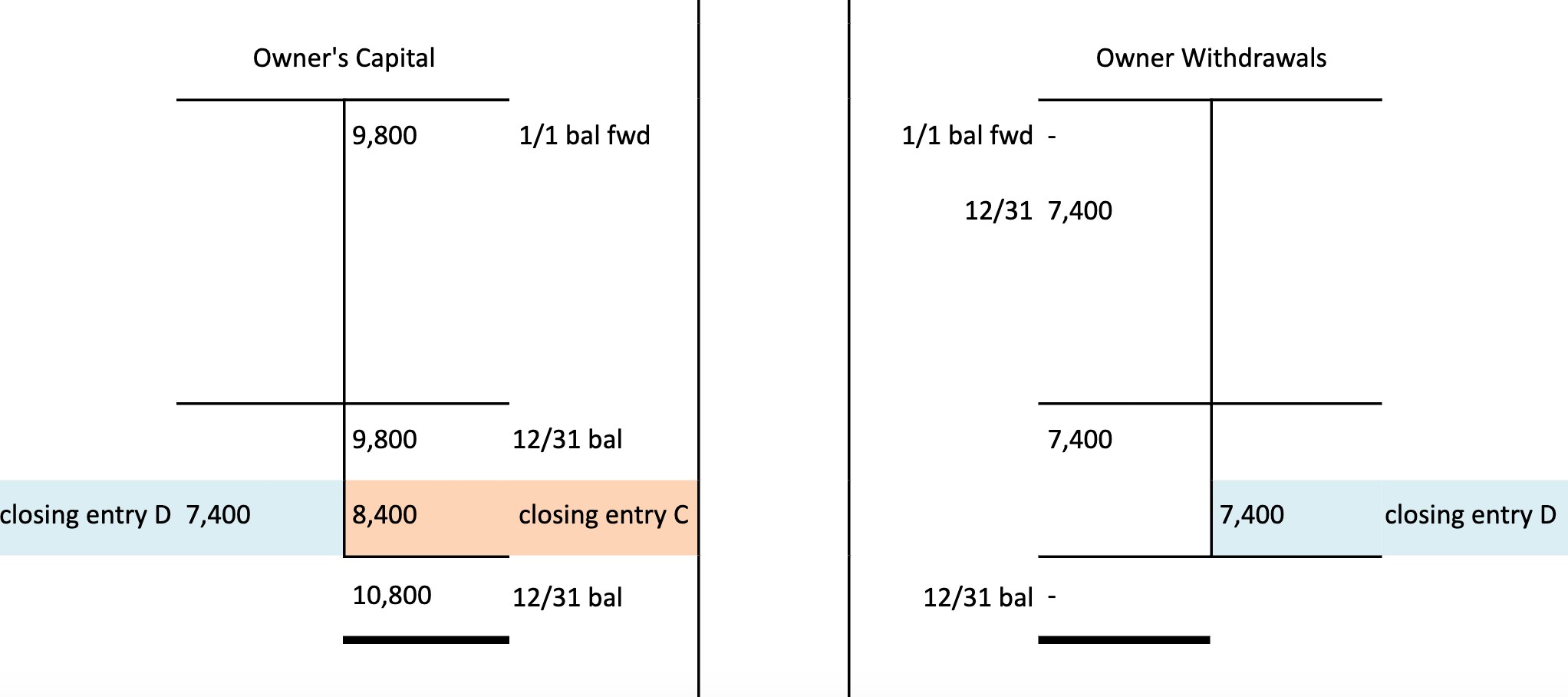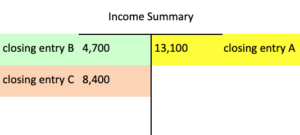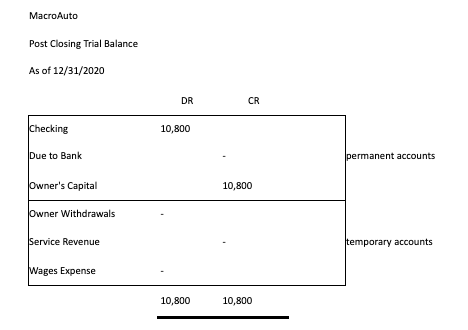- Post closing entries and prepare the post-closing trial balance

After we complete journal entries, we post them to the ledger and then run a post-closing trial balance:
Permanent Accounts Temporary Accounts
Once we are satisfied that everything is balanced, we carry the balances forward to the new blank pages of the next (now current) year’s ledger and are ready to start posting transactions.
Remember that closing entries are only used in systems using actual bound books made of paper. In any case, they are an important concept and they officially represent the end of the process.
Congratulations! You’ve—almost—completed the accounting cycle.




